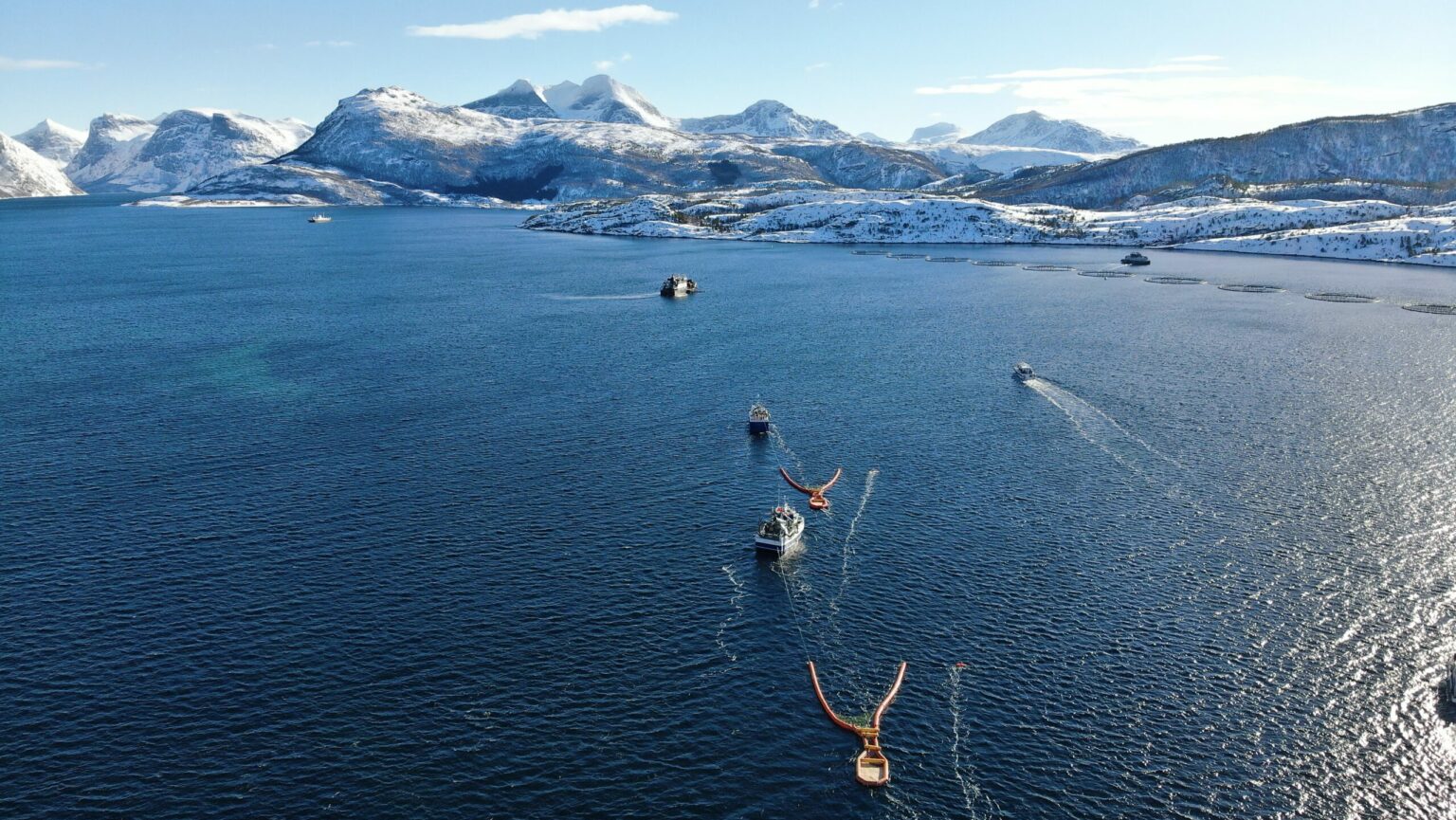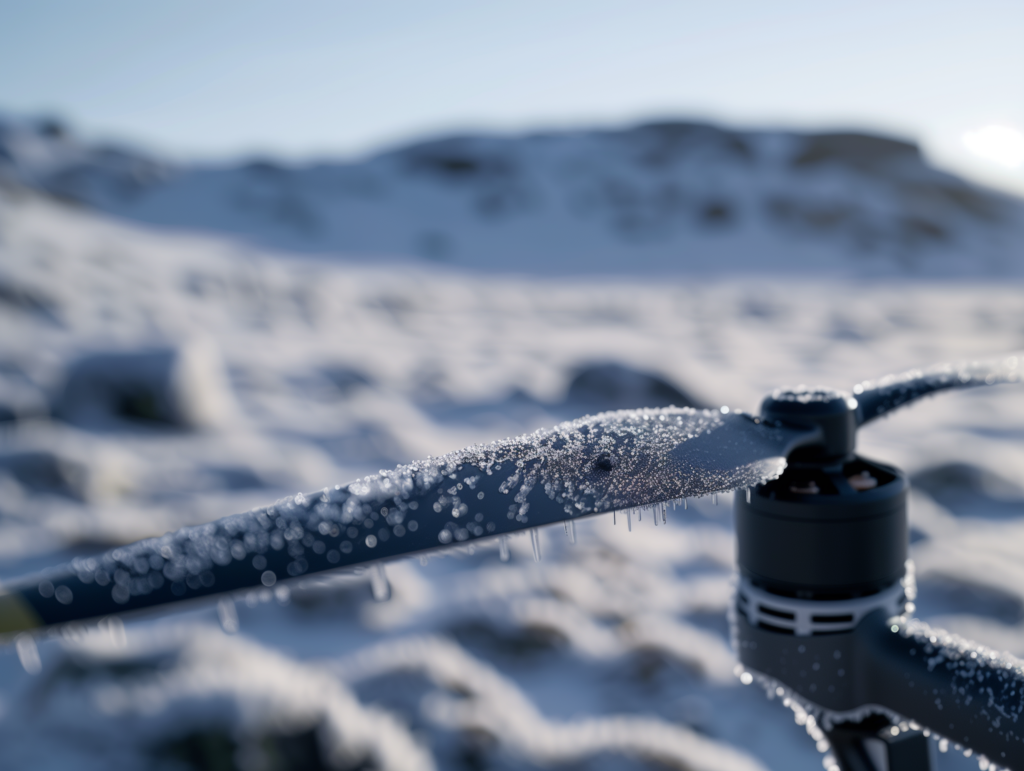
Abstract
Tiepoint, a leading company specializing in unmanned aerial vehicles (UAVs), has extensive experience operating drones in the challenging Arctic region. With a focus on electric UAVs used by NOFO (The Norwegian Clean Seas Association for Operating Companies), this article explores the unique challenges posed by icing conditions, polar lows, and sea spray ice in the Barents Sea. We will discuss the impact of these conditions on UAV performance and safety, as well as the solutions developed by Tiepoint to overcome these challenges.

Drones for Oil Spill Preparedness
NOFO utilizes UAVs to provide a bird’s-eye view that enables the on-scene commander to direct vessels and their oil spill containment systems, monitor temperature on pumps, observe wildlife, map shorelines, and more. UAVs have become an essential tool for effective oil spill preparedness. Therefore, year-round operations are crucial for maintaining readiness.
Icing as a Barrier to Drone Operations
Icing occurs when water droplets in the air freeze onto an object’s surface, reducing its aerodynamic performance and potentially leading to loss of control. In the Barents Sea, icing can take various forms, including freezing fog, freezing rain, and supercooled water droplets. These types of ice can accumulate on the propellers, rotors, and wings of UAVs, significantly reducing lift and maneuverability.

AI-Illustation: Icing on a quad-rotor propeller.
Current Anti-Icing Strategies
Anti-icing solutions are essential for ensuring the safe and reliable operation of UAVs in icing conditions. Larger, fuel-powered UAVs typically employ anti-icing systems similar to those used on aircraft. These systems include weeping wing solutions, rubber boots, bleed air from turbine engines, and electrical heat. However, these solutions can be complex, power-intensive, and relatively expensive, making them impractical for smaller, electric UAVs.
Adapting to Icing Conditions
For currently operated electric drones, the primary approach to mitigating icing is to proactively avoid operating in known icing conditions. This involves monitoring weather forecasts, utilizing radar and visual observations, and maintaining a close proximity to the vessel to facilitate rapid return in case of icing.
Procedures for Electric Drone Operations in the Barents Sea
Based on the practices of the former coastguard helicopter LYNX, several procedures have been established for operating electric drones in the Barents Sea and other areas at risk of icing conditions. These procedures include:
Avoiding areas with non-laminar temperature profiles: The Barents Sea typically exhibits a laminar decline in temperature with altitude. Drones should avoid operating in areas where this laminar profile is disrupted, as it can lead to localized icing.
Descending to lower altitudes: When icing is encountered, descending to lower altitudes can provide a slight temperature increase, which can help to melt accumulated ice.
Utilizing the warm-up effect of the sea: The relatively warm surface temperature of the Barents Sea can provide a degree of protection from icing. Descending to near-surface altitudes can maximize this effect.
Relying on ship observations and radar: Ships’ radar and visual observations can provide early warning of rain and snow showers, allowing drone pilots to react accordingly.
Checking for ice before takeoff: Before takeoff, pilots should let the drone ground hover for some time and then check the propeller blades for ice buildup. If ice is present, the drone should not take off.

Performance and Endurance of Electric Drones
Electric drones utilized in NOFO operations have demonstrated impressive flight endurance, ranging from 40 to 60 minutes for multirotors and 2 to 3 hours for electric fixed-wing drones with vertical take-off and landing (VTOL) capabilities. These endurance levels are anticipated to improve further with advancements in technology. The typical cruise speed of these drones is approximately 20 m/s, enabling them to cover a distance just over 1 km per minute.
Conclusion
Despite the challenges posed by icing conditions in the Arctic, electric drones, including multirotors and fixed-wing drones with VTOL capabilities, have proven to be effective tools for year-round operations in the Barents Sea, with considerations for wind and sea state restrictions. Tiepoint’s innovative procedures and adaptations ensure the safe and reliable operation of electric drones in these challenging conditions, making them a valuable asset for oil spill preparedness.
Other stories
We keep you up to date!